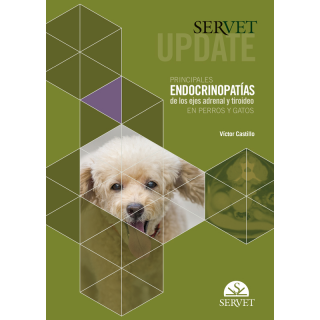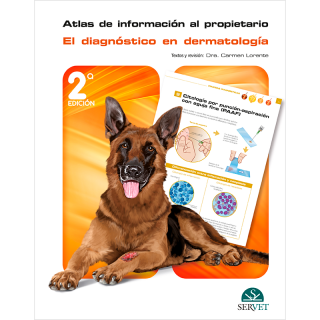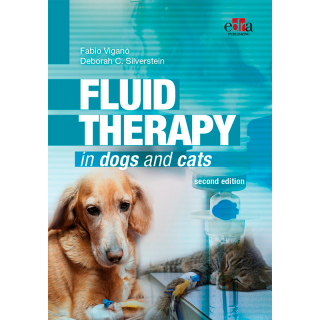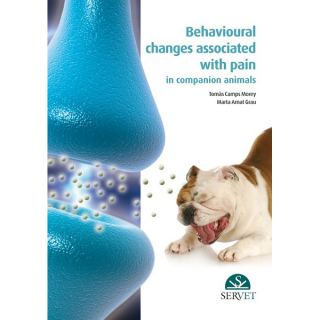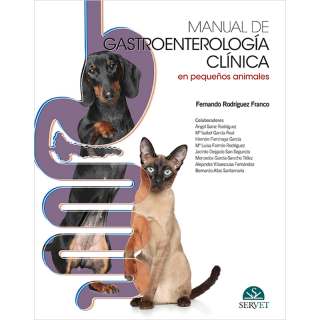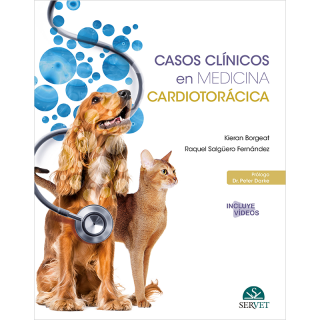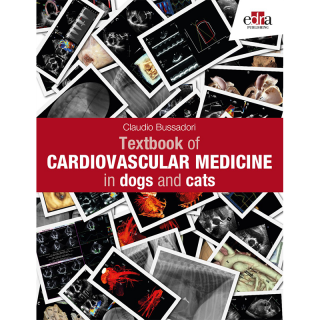Envío gratuito en compras superiores a 19€ (Península y Baleares)
Wound management and reconstructive surgery are among the most challenging and innovative subspecialties of veterinary surgery for the management of traumatic injuries and neoplastic conditions commonly encountered in small animals. Atlas of Small Animal Wound Management and Reconstructive Surgery, Fourth Edition presents detailed procedures for surgical reconstruction and essential information on the principles of wound healing and wound management for dogs and cats. Coverage encompasses the pathophysiology and management of the wide variety of wounds encountered in small animal practice and the most current reconstructive techniques for closing the most challenging defects.
Foreword
Preface
Acknowledgments
About the Companion Website
1. The Ski
Skin Functio
Skin Structur
Cutaneous Adnex
The Hypodermi
Cutaneous Circulatio
Pinna: Cutaneous Considerations
Congenital Skin Disorders
2. Basic Principles of Wound Healing
Introduction
Wound Healing
Acute Versus Chronic Open Wounds
Species Variations in Wound Healing
“Artificial Skin”
3. Basic Principles of Wound Management
Introduction
Patient Presentation
Mechanisms of Injury and Wound Terminology
Wound Classification
Options for Wound Closure
“Pointers” in Selecting the Proper Closure Technique
Basic Wound Management in Six Simple Steps
Exposed Bone: Osteostixis
Acute Versus Chronic Wounds
4. Topical Wound Care Products and Their Use
Wound Exudate
Wound Drainage Systems
Negative Pressure Wound Therapy (NPWT)
Concept of Moist Wound Healing (MWH)
Topical Wound Care Products
The Maggot and Leach in Wound Care
Common Topical Antiseptic and Cleansing Agents
Alternative Forms of Wound Therapy
Concluding Remarks
Plate 1: Vacuum‐Assisted Closure
5. Dressings, Bandages, External Support, and Protective Devices
Introduction
Dressings: The Primary Layer
Dressings: The Secondary Layer
Dressings: The Tertiary Layer
Preventing Bandage Displacement
Tie‐Over Dressing/Bandage Technique
Pressure Points: Bandage Options
Bandage “Access Windows”
Bandaging Techniques for Skin Grafts
Bandaging Techniques for Skin Flaps
Splints, Casts, Reinforced Bandages
Miscellaneous Protective Devices
Plate 2: Basic Bandage Application for Extremities
Plate 3: Tape Stirrups and Padding Dos and Don’ts
Plate 4: Elasticon Bandage Platforms and Saddles
Plate 5: Spica Bandages/Splints
Plate 6: Schroeder‐Thomas Splint
Plate 7: Schroeder‐Thomas Splint: Security Band Application
Plate 8: Body Brace
Plate 9: Tape Hobbles for the Rear Extremities
6. Common Complications in Wound Healing
Improper Nutritional Support
Medications and Their Influence on Healing
Hypovolemia and Anemia
The Nonhealing Wound: General Considerations
Failure to Heal by Second Intention
Scarring and Wound Contracture
Infection and Biofilm Formation
Draining Tracts
Use of Tourniquets for Lower Extremity Procedures
Seromas
Hematomas
Exposed Bone
Wound Dehiscence
7. Management of Specific Wounds
Bite Wounds
Burns
Inhalation Injuries
Chemical Burns
Electrical Injuries
Radiation Injuries
Frostbite
Projectile Injuries
Explosive Munitions: Ballistic, Blast, and Thermal Injuries
Impalement Injuries
Pressure Ulcers
Hygroma
Snakebite
Brown Recluse Spider Bites
Porcupine Quills
Lower Extremity Shearing Wounds
Plate 10: Pipe Insulation Protective Device: Elbow
Plate 11: Pipe Insulation to Protect the Great Trochanter
Plate 12: Vacuum Drain Management of Elbow Hygromas
8. Regional Considerations
The Canine and Feline Profiles
Plates 13A and 13B: Surgical Technique Menu
9. Tension‐Relieving Techniques
Introduction
Skin Tension in the Dog and Cat
Plate 14: Tension Lines
Plate 15: Effects of Skin Tension on Wound Closure
Plate 16: Patient Positioning Techniques
Plate 17: Undermining Skin
Plate 18: Geometric Patterns to Facilitate Wound Closure
Plate 19: V‐Y Plasty
Plate 20: Z‐Plasty (Option I)
Plate 21: Z‐Plasty (Option II)
Plate 22: Multiple Z‐Plasties
Plate 23: Relaxing/Release Incisions
Plate 24: The “Hidden” Intradermal Release/ Relaxing Incision
Plate 25: Multiple Release Incisions for Extremity Wounds
Plate 26: Suture Options to Alter Skin Traction and Retraction
Plate 27: Walking Suture Technique
Plate 28: Skin Stretchers to Offset Incisional Tension
Plate 29: “Tension” Suture Patterns
Plate 30: Retention Sutures
Plate 31: Stent
Plate 32: Skin “Directing” for Maximum Coverage
Plate 33: Relaxing Incision to Reduce Flap Tension
10. Skin‐Stretching Techniques
Physiology of Skin Stretching
Presuturing
Load Cycling
Skin Stretchers
Skin Expanders
Plate 34: Presuturing Technique
Plate 35: Application of Skin Stretchers
Plate 36: Skin Stretchers to Enhance Length of Axial Pattern Flaps
Plate 37: Skin Stretcher Substitution for Presuturing
Plate 38: Skin Expanders
11. Local Flaps
Introduction
Advancement Flaps
Rotating (Pivoting) Flaps
Plate 39: Single Pedicle Advancement Flap
Plate 40: Bipedicle Advancement Flap
Plate 41: Transposition Flap (90 degrees)
Plate 42: Transposition Flap (45 degrees)
Plate 43: Transposition Flap (Oblique Angle)
Plate 44: Local Facial Flap Options vs. Auricular Axial Pattern Flap
Plate 45: Transposition Flaps in Partial Wound Closure
Plate 46: Interpolation Flap
Plate 47: Rotation Flap
Plate 48: Forelimb Fold Flap
12. Distant Flap Techniques
Distant Flaps
Direct Flaps
Indirect Flaps
The Delay Phenomenon
Plate 49: Direct Flap: Single Pedicle (Hinge) Flap
Plate 50: Direct Flap Closure of Knee Defect
Plate 51: Direct Flap: Bipedicle (Pouch) Flap
Plate 52: Indirect Flap: Delayed Tube Flap
13. Axial Pattern Skin Flaps
Introduction: Axial Pattern Flaps
Island Arterial Flaps
Reverse Saphenous Conduit Flaps
Secondary Axial Pattern Flaps
Options to Extend the Length of Axial Pattern Flaps
Plate 53: Four Major Axial Pattern Flaps of the Canine Trunk
Plate 54: Skin Position and Axial Pattern Flap Development
Plate 55: Omocervical Axial Pattern Flap
Plate 56: Thoracodorsal Axial Pattern Flap
Plate 57: Lateral Thoracic Axial Pattern Flap
Plate 58: Superficial Brachial Axial Pattern Flap
Plate 59: Caudal Superficial Epigastric Axial Pattern Flap
Plate 60: Cranial Superficial Epigastric Axial Pattern Flap
Plate 61: Deep Circumflex Iliac Axial Pattern Flap: Dorsal Branch
Plate 62: Deep Circumflex Iliac Axial Pattern Flap: Ventral Branch
Plate 63: Flank Fold Flap: Hind Limb
Plate 64: Genicular Axial Pattern Flap
Plate 65: Reverse Saphenous Conduit Flap
Plate 66: Caudal Auricular Axial Pattern Flap
Plate 67: Superficial Temporal Axial Pattern Flap
Plate 68: Lateral Caudal (Tail) Axial Pattern Flap
14. Free Grafts
Free Skin Grafts
Classification of Free Grafts
Graft Thickness
Partial‐Coverage Grafts
Dermatomes
Preservation by Refrigeration
Intraoperative Considerations
Bandaging Technique for Skin Grafts
Use of Plates
Plate 69: Punch Grafts
Plate 70: Pinch Grafts
Plate 71: Strip Grafts
Plate 72: Stamp Grafts
Plate 73: Sheet Grafts
Plate 74: Dermatome: Split‐Thickness Skin Graft Harvesting
Plate 75: Mesh Grafts (With Expansion Units)
Plate 76: Mesh Grafts (With Scalpel Blades)
15. Facial Reconstruction
Introduction: Facial Reconstructive Surgery
Plate 77: Repair of Upper Lip Avulsion
Plate 78: Repair of Lower Labial Avulsion
Plate 79: Wedge Resection Technique
Plate 80: Rectangular Resection Technique
Plate 81: Full‐Thickness Labial Advancement Technique (Upper Lip)
Plate 82: Full‐Thickness Labial Advancement Technique (Lower Lip)
Plate 83: Buccal Rotation Technique
Plate 84: Lower Labial Lift‐Up Technique
Plate 85: Upper Labial Pull‐Down Technique
Plate 86: Labial/Buccal Reconstruction with Inverse Tubed Skin Flap
Plate 87: Skin Flap for Upper Labial and Buccal Replacement (Facial [Angularis Oris] Axial Pattern Flap)
Plate 88: Feline Facial Axial Pattern Flap
Plate 89: Cleft Lip Repair (Primary Cleft, Cheiloschisis, Harelip)
Plate 90: Unilateral Rostral Labial Pivot Flaps
Plate 91: Bilateral Rostral Labial Pivot Flaps
Plate 92: Oral Commissure Advancement Technique
Plate 93: Brachycephalic Facial Fold Correction
Plate 94: Cheilopexy Technique for Drooling
16. Myocutaneous Flaps and Muscle Flaps
Introduction
Myocutaneous Flaps
Muscle Flaps
Plate 95: Latissimus Dorsi Myocutaneous Flap
Plate 96: Cutaneous Trunci Myocutaneous Flap
Plate 97: Latissimus Dorsi Muscle Flap
Plate 98: Latissimus Dorsi Bipedicle Muscle Flap
Plate 99: Triceps Replacement with Latissimus Dorsi Muscle
Plate 100: External Abdominal Oblique Muscle Flap
Plate 101: Caudal Sartorius Muscle Flap
Plate 102: Cranial Sartorius Muscle Flap
Plate 103: Temporalis Muscle Flap
Plate 104: Transversus Abdominis Muscle Flap
Plate 105: Semitendinosus Muscle and Myocutaneous Flaps
Plate 106: Flexor Carpi Ulnaris Muscle Flap
Plate 107: Cranial Tibial Muscle Flap
Plate 108: Internal Obturator Muscle Flap
Plate 109: Superficial Gluteal Flap for Perineal Hernia Closure
17. Oral Reconstructive Surgical Techniques
Introduction
Cleft Palate
Palatal Defects/Oronasal Fistulas
Plate 110: Mucosal Flaps
Plate 111: Palatoplasty: Bipedicle Advancement Technique
Plate 112: Cleft Palate Repair: Mucoperiosteal Flap Technique
Plate 113: Palatine Mucosal Flap
Plate 114: Soft Palate/Pharyngeal Mucosal Flaps
Plate 115: Full‐Thickness Labial Flap Closure of Oronasal Fistulas
Plate 116: Cartilage Grafts for Palatal Fistulas
Plate 117: Angularis Oris Mucosal Flap
18. Foot Pad Reconstruction
Introduction
Pad Laceration and Lesion Excision
Digital Pad Transfer
Metacarpal/Metatarsal Pad Transfer
Accessory Carpal Pad
Pad Grafting
Digital Flaps for Wound Closure
Fusion Podoplasty
Plate 118: Digital Flap Technique: Major Digital/ Interdigital Defects
Plate 119: Digital Flap Technique: Major Defects of Digits Two or Five
Plate 120: Digital Pad Transfer
Plate 121: Metatarsal/Metacarpal Pad Transfer
Plate 122: Pad Grafting
Plate 123: Segmental Pad Grafting Technique
Plate 124: Fusion Podoplasty
19. Major Eyelid Reconstruction
Introduction
The Eyelids
Plate 125: Skin Flap Options for Cutaneous Defects of the Eyelid Regions
Plate 126: Lip‐to‐Lid Procedure
Plate 127: Oral Mucosal Graft onto Skin Flap
Plate 128: Third Eyelid–Skin Flap Reconstruction of the Lower Eyelid
20. Nasal Reconstruction Techniques
Introduction: Nasal Anatomy
Traumatic Wound Management
Neoplasia
Neoplasms and Surgical Margins
Nasal Reconstruction Options
Options for Managing Nasal Stenosis
Plate 129: Septal Coverage Using Cutaneous Advancement Flaps
Plate 130: Bilateral Sulcus Flap Technique
Plate 131: Septal Resection Technique
Plate 132: Dorsal Nasal Splitting Technique to Enhance Exposure of Septum
Plate 133: Alar Fold Flaps
Plate 134: Musculofascial Island Labial Flap
Plate 135: Labial Mucosal Inversion Technique
Plate 136: Nasal Reconstruction with the “Lip‐to‐ Lid Technique” Variation
Plate 137: Oral Mucosal Graft with Nasal Stenting
Plate 138: Intranasal Septal Window Technique
Plate 139: Cantilever Suture Technique
21. Cosmetic Closure Techniques
Cosmetic Considerations
Causes of Scars
Minimization of Scarring
Dog Ears
Plate 140: Scar Concealment
Plate 141: W‐Plasty
Plate 142: Dog Ear: Surgical Correction
22. Preputial Reconstructive Surgery
Introduction
Surgical Conditions
Surgical Techniques
Plate 143: Preputial Ostium Enlargement
Plate 144: Preputial Ostium Reduction
Plate 145: Preputial Advancement Technique
Plate 146: Phallopexy
Plate 147: Urethral Reconstruction for Subanal Hypospadias
Plate 148: Preputial Urethrostomy Technique
Plate 149: Urine Diversion Technique
23. Pinnal Reconstructive Surgery
Introduction
Anatomy of the Pinna
Surgical Conditions
Wound Management and Reconstructive Surgical Techniques
Aural Hematoma Management Options
Plate 150: Skin Advancement Closure: Rostral Pinnal Base
Plate 151: Skin Advancement Closure: Caudal Pinnal Base
Plate 152: Transposition Flap Technique for Smaller Medial Pinnal Defects
Plate 153: Transposition Flap Technique for Minor Lateral Pinnal Defects
Plate 154: Large Transposition Flap Closure After Major Medial Pinnal Resection
Plate 155: Transposition Flap for Major Lateral Pinnal Defects
Plate 156: Direct Flap Reconstruction of the Pinna
Plate 157: Resection of the Terminal Third of the Pinna
Plate 158: Inverted “Triangle” Resection of the Central Third of the Pinna
Plate 159: Incisional Drainage of Aural Hematomas
Plate 160: Bandaging the Pinna
Plate 161: Vacuum Drain Management of Aural Hematomas
24. Miscellaneous Reconstructive Surgical Techniques
Omentum
Scrotum
Tail Fold Intertrigo (Screw Tail)
Disorders of the Vulva
Managing Skin Fold Inversion of Urethrostomies
Fecal Incontinence: Treatment Options
Plate 162: Omental Flap Options
Plate 163: Scrotal Flap Technique
Plate 164: Caudectomy for Tail Fold Intertrigo
Plate 165: Episioplasty
Plate 166: Fascia Lata Sling and Silicone Banding for Managing Fecal Incontinence
Plate 167: Spiral Rectal Diaphragm Technique (Rectal Rifling)
Index
- Autor/es Michael M. Pavletic
- Fecha de edición enero 2018
- Nº Páginas 880
- Encuadernación Tapa dura
- Tamaño 22'1 X 28'4
- Idioma Inglés



